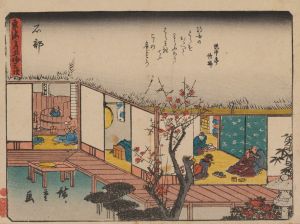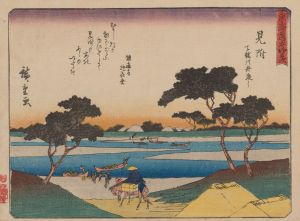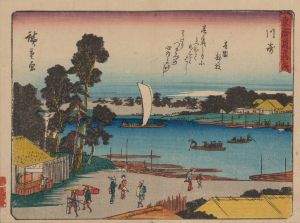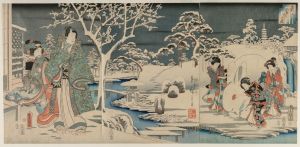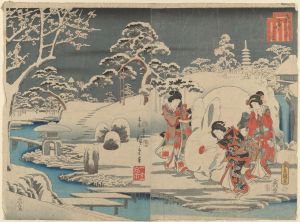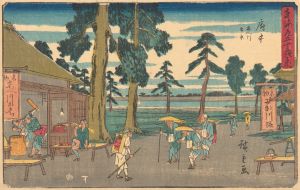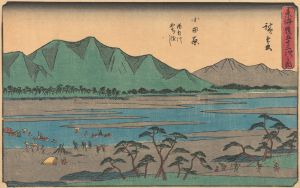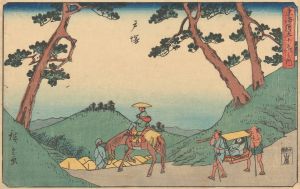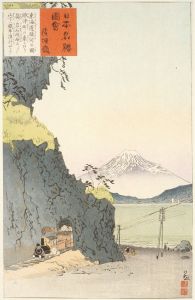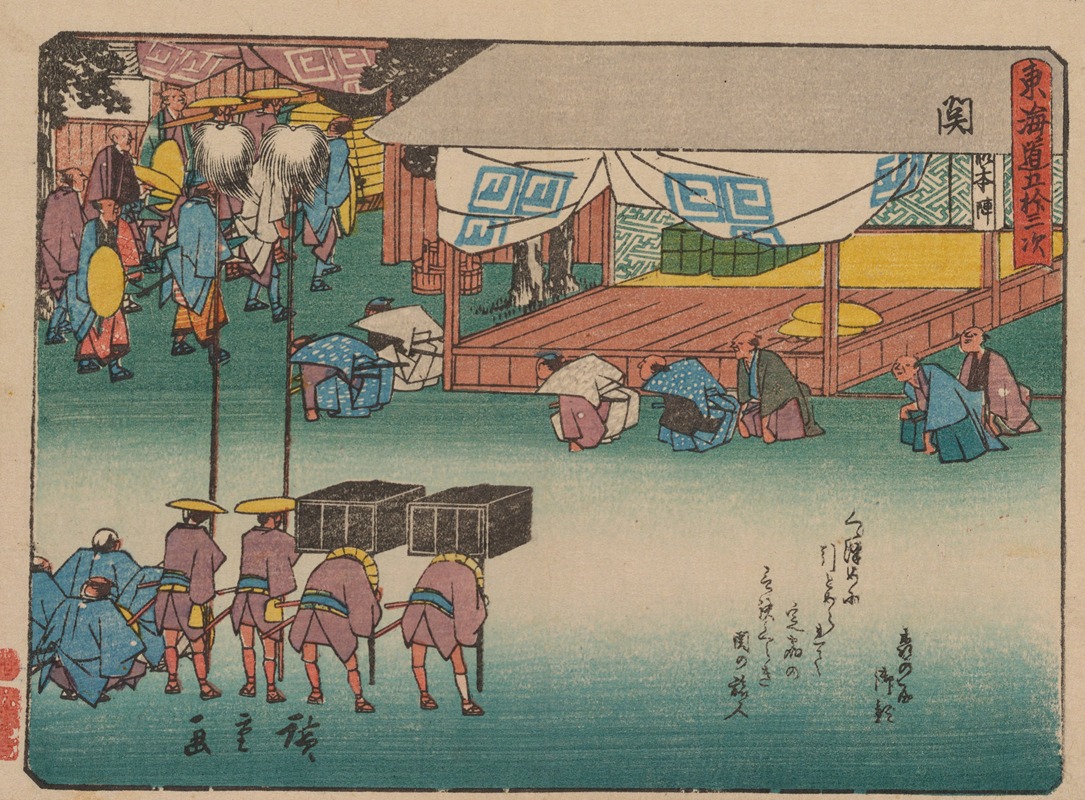
Tokaido gojusantsugi, Pl.48
A hand-painted replica of Andō Hiroshige’s masterpiece Tokaido gojusantsugi, Pl.48, meticulously crafted by professional artists to capture the true essence of the original. Each piece is created with museum-quality canvas and rare mineral pigments, carefully painted by experienced artists with delicate brushstrokes and rich, layered colors to perfectly recreate the texture of the original artwork. Unlike machine-printed reproductions, this hand-painted version brings the painting to life, infused with the artist’s emotions and skill in every stroke. Whether for personal collection or home decoration, it instantly elevates the artistic atmosphere of any space.
Tokaido gojusantsugi, Pl.48, also known as "The Fifty-Three Stations of the Tokaido, Plate 48," is a woodblock print by the renowned Japanese ukiyo-e artist Andō Hiroshige. This print is part of Hiroshige's famous series "The Fifty-Three Stations of the Tokaido" (Tōkaidō Gojūsan-tsugi), which was created in the early 1830s. The series depicts the various stations along the Tokaido road, a major route that connected the shogunal capital of Edo (modern-day Tokyo) with the imperial capital of Kyoto.
Andō Hiroshige, born in 1797 and died in 1858, was one of the last great masters of the ukiyo-e tradition. His work is celebrated for its innovative compositions and the use of color to evoke mood and atmosphere. Hiroshige's Tokaido series is particularly notable for its detailed and poetic portrayal of landscapes and scenes from everyday life during the Edo period.
Plate 48 of the Tokaido series specifically depicts the station of Akasaka. Akasaka was one of the fifty-three post stations along the Tokaido road, which served as resting points for travelers. These stations provided lodging, food, and other services to those journeying between Edo and Kyoto. Hiroshige's depiction of Akasaka captures the essence of travel and the natural beauty of the area.
In this print, Hiroshige illustrates a serene rural scene with travelers making their way along the road. The composition often includes elements such as mountains, rivers, and trees, which are characteristic of Hiroshige's landscape prints. The use of perspective and the arrangement of figures and natural elements create a sense of depth and movement, drawing the viewer into the scene.
Hiroshige's Tokaido series was highly popular during his lifetime and remains one of his most celebrated works. The series not only provides a visual record of the Tokaido road and its stations but also offers insights into the culture and daily life of the Edo period. Each print in the series is a testament to Hiroshige's skill in capturing the transient beauty of nature and the human experience.
The Tokaido gojusantsugi series was produced using the traditional Japanese woodblock printing technique, which involved carving the image into a wooden block, inking the block, and then pressing it onto paper. This method allowed for the production of multiple copies of each print, making Hiroshige's work accessible to a wide audience.
Today, Hiroshige's prints, including Plate 48 of the Tokaido series, are highly valued by collectors and art enthusiasts around the world. They are frequently exhibited in museums and galleries, where they continue to be admired for their artistic and historical significance. Hiroshige's work has also influenced many Western artists, including the Impressionists, who were inspired by his use of color and composition.
In summary, Tokaido gojusantsugi, Pl.48 by Andō Hiroshige is a significant work within the larger context of the Tokaido series. It exemplifies Hiroshige's mastery of the ukiyo-e art form and his ability to convey the beauty and essence of the Japanese landscape and culture during the Edo period.





